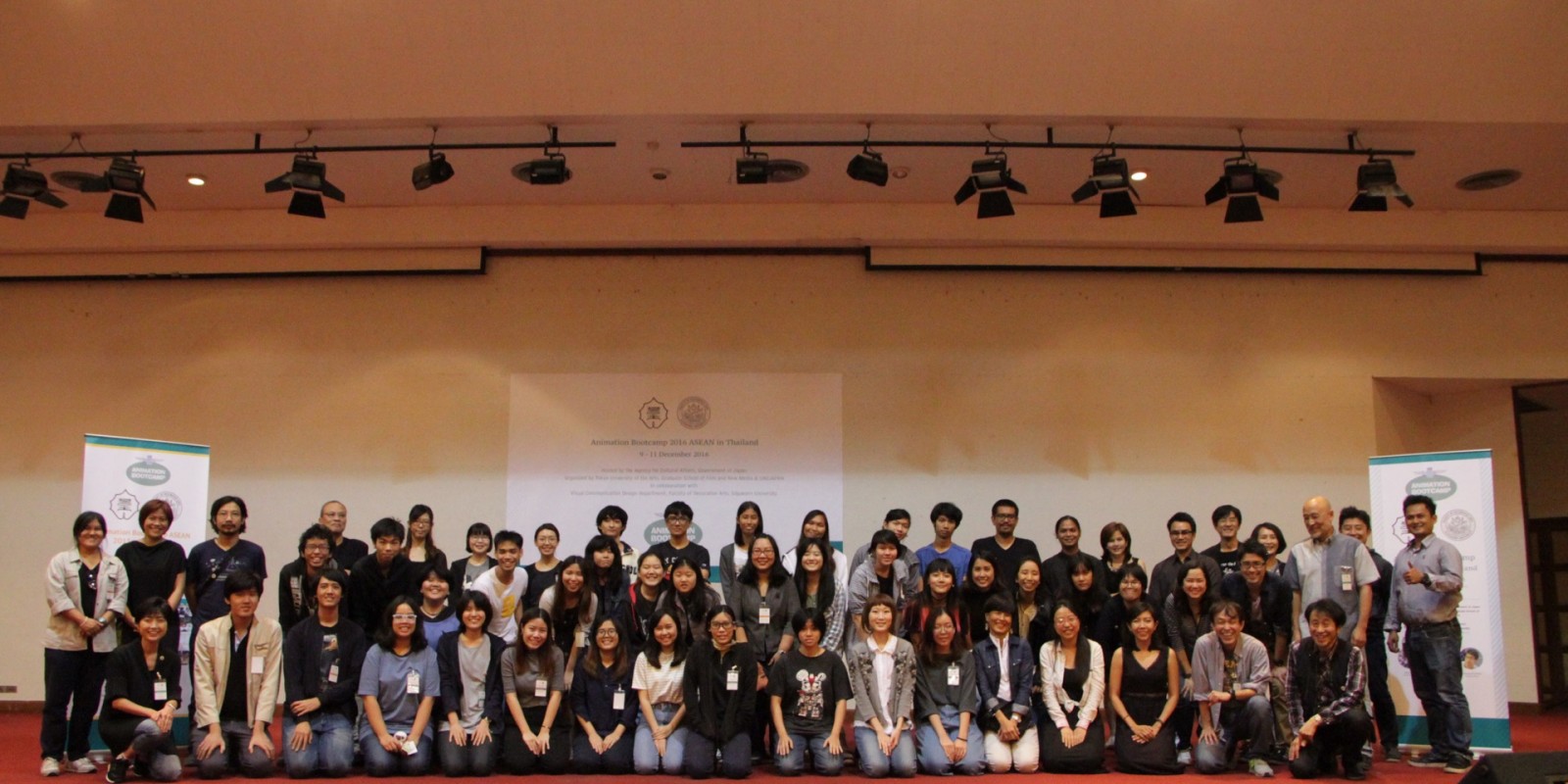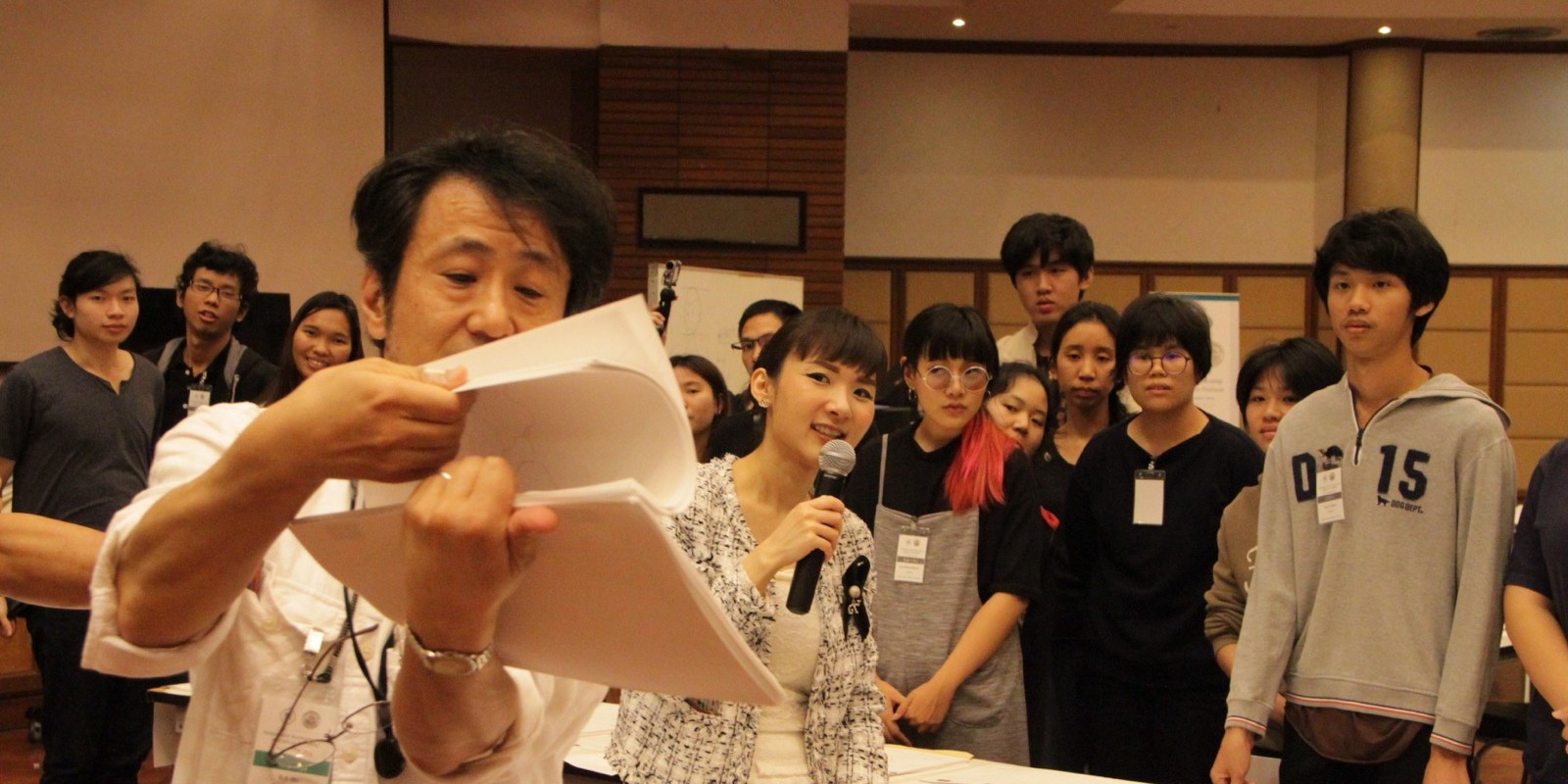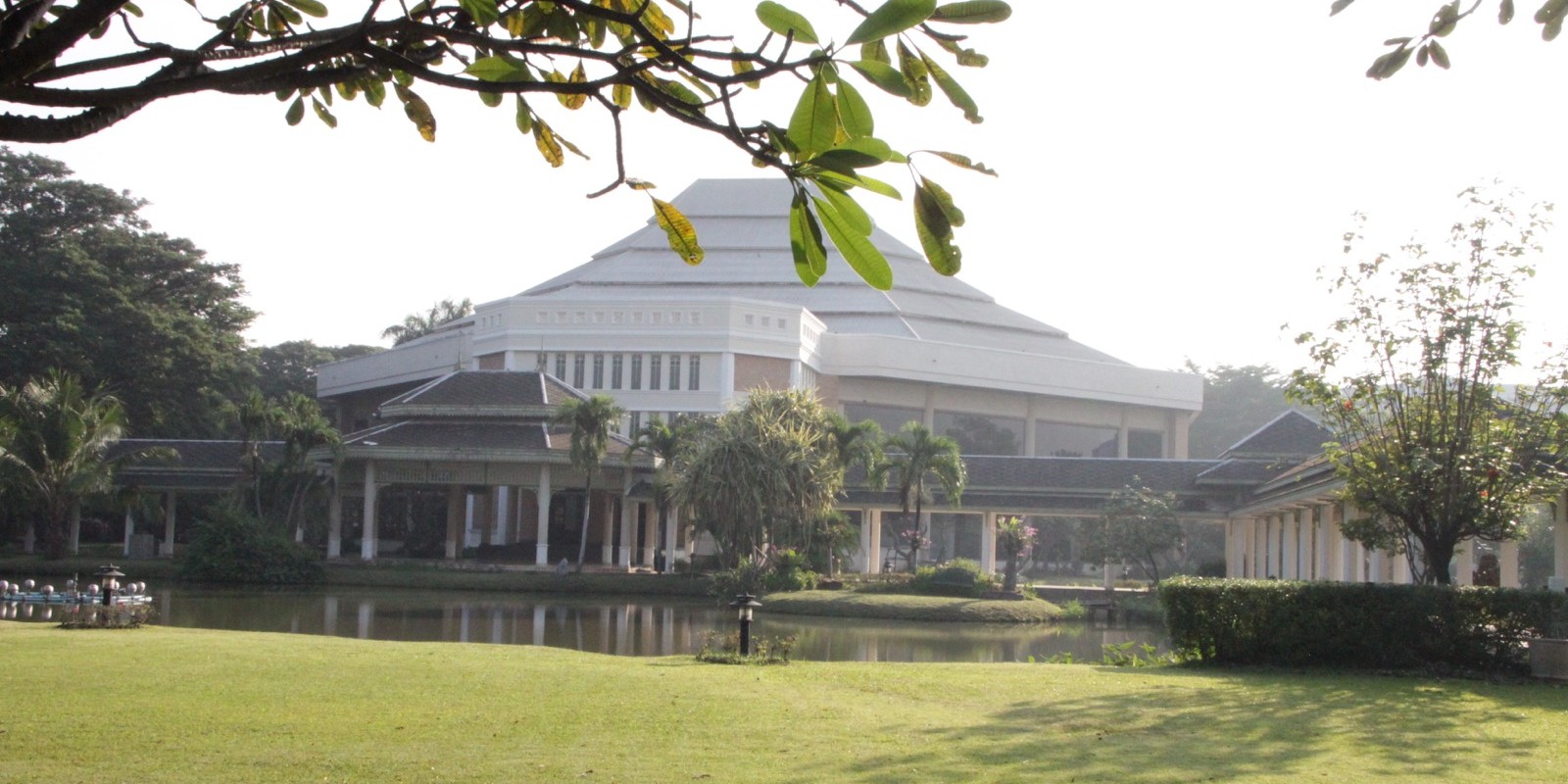Background and Objectives
Among ASEAN countries, Thailand is the country where Japanese animation is most well known. Research conducted in 2015 found that Thailand had the 7th highest number of overseas contracts (television, film, video gram, streaming, merchandising, etc.) for animation production companies, following the United States, China, Canada, South Korea, Taiwan, and Italy. Thailand far outpaced other ASEAN countries such as Indonesia, the Philippines, and Singapore, which ranked 15th to 17th. Looking also at their history, Japan and Thailand have had a deep relationship in the animation field. Kantana Group’s Kantana Animation Studios, which is the nation’s largest and oldest film production studio, started off as a subcontracting company for Japan’s Toei Animation. Kantana Animation Studios later shifted towards producing 3DCG, and in 2006 produced Thailand’s first animated feature film, Khan Kluay, followed by two more animated feature films and TV series.
Emerging talent in the animation industry is fostered at animation programs at educational facilities around the nation. One such institution is Silpakorn University, which was a supporter of this project. This educational involvement indicates that we can look forward to further growth of the nation’s animation industry. However, currently there are few experts who specialize in animation, especially for mainstream 3DCG and traditional 2D animation. In response to this situation, we started a hands-on workshop where we dispatched three prominent professional animators from Japan to teach the basics of animation expression to local young talents in Thailand. The curriculum and teaching methods were based on the Animation Boot Camp workshop, which was held in 2012 by the Agency of Cultural Affairs as one of their media arts projects.
Animation Boot Camp is an educational program that aims to “train talent who can seek personal growth and development.” It teaches the basics and essentials of animation focusing on using the body to “observe” and “feel” and to search for “expression that communicates to others.” Lecturers were comprised of Japan’s top animators who rarely make public appearances and the workshop allowed students to receive direct guidance from them. By conducting the workshop in Thailand, we aimed to inspire local young talents and give them an in-depth understanding of Japanese animation.
We conducted our first Animation Boot Camp last year, which received very high reviews from the participating students and professors from local universities, and we were urged to continue holding this workshop. Furthermore, we are starting to see direct positive results from the workshop through animation works that were produced by last year’s students. These animators have incorporated and further enhanced what they learned through the workshop, and their works have received high acclaim at film festivals. Because of these positive outcomes, we held the second Animation Boot Camp in Thailand and extended the workshop from two to three days to further enhance the quality of the program. Also, we expanded the program by recruiting students from Japan, which resulted in the participation of six graduate students from Tokyo National University of the Arts.
Team
| From Japan | |
|---|---|
| Instructors | Yoshiaki Kyogoku (Animator/Director) |
| Yoshiharu Sato (Animator/Nippon Animation Co., Ltd.) | |
| Shinji Seya (Animation Director/Production Department Animation Director, Tezuka Productions Co., Ltd.) | |
| Directors | Koji Takeuchi (Animation Producer) |
| Taruto Fuyama (Professor, Tokyo National University of the Arts) | |
| Project Producer | Mitsuko Okamoto (Professor, Tokyo National University of the Arts) |
| Project Manager | Asako Eguchi (Assistant Professor, Tokyo National University of the Arts) |
| Translators | Rinyaphat Phattaratheeda Mukkie |
| Akiko Kume | |
| Planning and Administration | Graduate School of Film and New Media, Tokyo University of the Arts |
| General Management | UNIJAPAN |
| Project Chief | Tatenari Maeda(Executive Producer, International Projects Division Information Communication Group |
| Project Manager | Mayu Honda (International Promotion Group) |
| From Thailand | |
|---|---|
| Silpakorn University | |
| Project Producer | Chanisa Changadvec (Chair of Visual Communication Design Department, Faculty of Decorative Art) |
| Translation Director | Chaiyosh Isavorapant (Faculty of Painting Sculpture and Graphic art) |
| Staff | Chitchai Kuandachakupt (Product Design Department, Faculty of Decorative Art) |
| Naj Phonghanyudh (Applied Arts Department, Faculty of Decorative Arts) | |
| Thatree Muangkaew (Ceramics Department, Faculty of Decorative Arts) | |
| Atiwat Wiroonpetch (Visual Communication Design Department, Faculty of Decorative Arts) | |
| Kanitta Meechubot (Visual Communication Design Department, Faculty of Decorative Art) | |
| Sutasinee Vajanavini (Visual Communication Design Department, Faculty of Decorative Art) | |
| Assistants to Lecturers (Graduates of Silpakorn University)
Chayanit Kiatchokechaikul (Illustrator) |
|
| Students’ University Affiliation] |
|---|
| Silpakorn University |
| -Visual Communication Design Department, Faculty of Decorative Arts (10 students) |
| -Animation, ICT (2 students) |
| -Digital Communication Design, Multimedia (2 students) |
| Mahidol University International College / Animation Production (2 students) |
| Rangsit University / Computer Art (2 students) |
| King Mongkut’s University of Technology Thonburi / Media Arts (2 students) |
| King Mongkut’s Institute of Technology Ladkrabang / Film and Digital Media (2 students) |
| Kantana Film and Animation Institute / Animation Production (2 students) |
| Sriprathum University / Digital Media (1 student) |
| Graduate School of Film and New Media Tokyo University of the Arts, Animation Department (6 students) |
Instructor Profiles
-
Yoshiaki Kyogoku ( Animator/Director)
-
Yoshiharu Sato (Animator/Nippon Animation Co., Ltd.)
-
Shinji Seya (Production Department Animation Director/Tezuka Productions Co., Ltd.)
Project Overview
《Project Name》
“Animation Boot Camp 2016 ASEAN”
《Dates》
Friday, December 9, 2016 to Sunday, December 11, 2016
《Venue》
Silpakorn University, Sanam Chandra Palace Campus(Located in Nakhon Pathom, about 50 km west of Bangkok)
《Participants》
25 Thai students
6 graduate students from Tokyo National University of the Arts
1 graduate of Tokyo National University of the Arts
Silpakorn University
-Visual Communication Design Department, Faculty of Decorative Arts (10 students)
-Animation, ICT (2 students)
-Digital Communication Design, Multimedia (2 students)
Mahidol University International College
-Animation Production (2 students)
Rangsit University
-Computer Art (2 students)
King Mongkut’s University of Technology Thonburi
-Media Arts (2 students)
King Mongkut’s Institute of Technology Ladkrabang
-Film and Digital Media (2 students)
Kantana Film and Animation Institute
-Animation Production (2 students)
Sriprathum University
-Digital Media (1 student)
Tokyo University of the Arts
– Graduate School of Film and New Media, Animation Department (6 students)
Details of the Workshop
《Day 1》
Participants were divided into six groups and each group worked together to produce a ‘walking’ sequence, which is a fundamental building block for animation. Prior to animating the walking sequence, each student created a paper doll that was used as reference for the animation production. Most of the participants were meeting for the first time, and this activity of making paper dolls helped to promote communication within the groups.
In the opening ceremony, welcome speeches were given by Mr. Chaicharn Thavaravej, the president of Silpakorn University, Ms. Chanisa Changadvech, the local project producer, and Ms. Mitsuko Okamoto, the Japanese project producer. Following the opening ceremony, Mr. Seya briefly presented the objectives for the three-day workshop, and the students were told that they would immediately start work on their walking animation assignment. First, time was set aside for the students to actually walk and make observations in order to understand the movement of walking with their own body. Next, the students were directed to animate walking sequences within the short time frame of one hour.
Some of the participants had only created digital animation using tablets before this, and they seemed to be excited by the traditional style of drawing on paper with a pencil. After finishing the animation drawings, the students shot their frames using the animation filming software “Koma Koma,” which was developed by director Fuyama. Finally, all of the students’ walking sequences were played on one screen and the instructors reviewed their work. Afterwards, Mr. Seya explained key elements of animating a walk and the students were then asked to try improving their walk animation. Once these were completed, the students were introduced to production materials (storyboard, layouts, key animation, inbetweens, exposure sheets) for the animated film Sinbad, the animation directed by Mr. Sato. The students were told that they could freely look through the materials during their free time throughout the workshop. Copies of the production materials were kindly provided by Nippon Animation Co., Ltd. Needless to say, the rarely seen production materials were very precious not only to the students but to the observers as well, and many of them were found avidly looking through the materials and passionately asking questions to the instructors and staff.
Mr. Kyogoku began the afternoon session with an exercise called the Theater Game which involves physical activity. The students were instructed to pass around an imaginary ball. It was a game-like experience in which students used pantomiming to express their intended movement. They were explained that in animation expression it is also important to form an image within their minds that can be transmitted to others. After the Theater Game exercise, the revised walking animations were reviewed. The instructors were impressed to see distinct improvements in each walking sequence, despite the time limitations imposed on the assignment.
After the walk animation review, Mr. Seya presented the main assignment for the workshop. Based on a storyboard that had been prepared in advance, each student in the group was assigned to one scene, so that when all the scenes were connected they formed one animation piece that consisted of five to six short scenes. The story was about a boy who tries to move a box with a watermelon in it. It was a difficult assignment with numerous elements that needed to be dealt, for example, expressing the heaviness of the box, expressing the boy’s emotions through his walk, and connecting the scenes so that the expression is consistent. First, the groups discussed the details of the story based on the storyboard. Later, each group created a more detailed storyboard based on the story they concocted. Then, each storyboard frame was shot by an animation filming software developed by director Fuyama called “Koma Checker” completing the animatics for each group.
At the end of the first day, the animatics for all the groups were screened and reviewed by the instructors. Each group was given advice from the instructors and also a reminder from director Takeuchi to try to convey the character’s emotions to the audience as best as possible.
《Day 2》
Day 2 was dedicated to animating the main assignment. Actual watermelons and boxes were brought into the classroom so that the students could act out the scenes at any time. Each of the three instructors oversaw two groups and answered questions and gave advice during the production process. The students were allowed to test their animation by filming with the “Koma Checker” and the instructors checked the footage with them and gave suggestions for improvement. All communication between student and instructor was translated to either Thai or English. By the end of Day 2, most of the groups had completed the rough drawings for each scene from start to finish. Back when the animatics were shot, some groups worried the instructors if they could finish on time due to the complexity of the acting; however, the Thai students greatly surprised and impressed the instructors with their animating speed.
《Day 3》
The morning of the last day was set aside to complete the main assignment. All groups completed the assignment by 14:00, although some groups took longer than others. Later, there was a screening of Sinbad-The Magic Lamp and the Moving Island, in which Mr. Sato was credited animation director. Although the film had no English subtitles, the students seemed to understand the story without any difficulty due to the synopsis given out beforehand.
After the movie, the completed assignments were screened and critiqued. Each group received detailed comments about their production as a whole, as well as in-depth feedback about the scenes each student had created. Following the evaluation, approximately an hour was dedicated to a Q&A session in which not only the students but also Silpakorn University professors asked many constructive questions. Finally, each student was given a certificate of completion, and the program came to an end. There was a long line of students waiting to get autographs from the instructors after the closing ceremony.
Questionnaire Responses from Workshop Participants
- Was this workshop interesting?
-
It was very interesting. 20 (80%)
It was interesting to a certain degree. 5 (20%) - Do you think that what you learned in this workshop will be useful in your future projects?
-
It will be very useful. 18(72%)
It will be useful to a certain degree. 6(24%)
No response 1(4%) - Please list some of the things you have learned in this workshop.
-
· The 2D hand-drawn animation production process
· 2D hand-drawn animation. It was my first time drawing animation using a light box since I always use the computer to make animation digitally.
· It was my first time working with hand-drawn animation. I was able to learn about character movements, such as walking, running, and expressing emotions. All of them were very difficult but very fun at the same time. Through this experience, I became more interested in animation.
· Basics of animation and the details that come with them (the walk cycle, etc.)
· Movement cycles of walking and running, key poses, correct leg movement. Furthermore, I learned about teamwork and the skills neces-sary to manage different ideas when working in a production environment.
· Teamwork. I had experience doing something similar at my university, but we weren’t able to create anything in such high quality. It was probably because we didn’t have good team work and communication skills.
·I had never experienced animation production in a team. It was very fun, and I was able to learn new techniques from others. · How to draw characters and how to express creative ideas.
· How to draw poses. I learned that it is neces-sary to do the acting myself and to observe actual objects in order to do so. · It not difficult to make an animation.
· How to gain the inspiration to make animation
· Advice from professional animators
· Basic animation tactics
· How to merge technique and imagination
· How to draw frames correctly in order to express movement
· About timing and framing and how to draw human movements
· How the details in one frame of an animation hold great importance
Conclusions
This was our second time in two years to take on this project, and we were able to further develop a more high-quality cultural exchange and cooperation program by making improvements based on our experiences from last year. The improvements and reflections made are as follows:
· By extending the curriculum from two to three days, the students had adequate time to complete their assignment, thus improving the quality of the finished product. Also, there was sufficient time for discussions, resulting in stronger teamwork and more active interaction.
· Last year we did not hire professional translators; therefore, there were quite a few instances when communication between instructors and students did not go smoothly. For this workshop, the presence of highly qualified translators eliminated almost all problems relating to communication.
· Due to Silpakorn University’s situation, we had to conduct the workshop in Nakhon Pathom and not in Bangkok like last year. Thus, it became more difficult for students from distant universities to participate; however, there were several merits from an operational standpoint. First, we were removed from the city’s bustle so the participants could concentrate on the work. Also, we were not affected by traffic when commuting between our hotel and the campus. Furthermore, the workshop hall was more spacious than last year, so the students had adequate space to move around during the Theater Game.
· We were once again able to receive support from graduates of Silpakorn University, including a few who had worked as supporting staff last year as well. There were also supporting staff this year who were participants last year. We now have a new possibility for recruiting help, i.e., the Animation Boot Camp alumni.
· Six students from Japan participated in this workshop, along with two more students who documented it. They were all graduate students of the Graduate School of Film and New Media at Tokyo University of the Arts, and the school covered their overseas travel expenses. Initially, there were concerns regarding the participation of Japanese students due to communication barriers; however, contrary to our worries, their participation seemed to trigger more active group interaction during their work, and there seemed to be stronger bonding among the members. These positive effects became evident in the impressive quality of the completed assignments.
· Thanks to Silpakorn University’s efforts to widely publicize this project, there was a definite increase in the number of observers than last year. Unfortunately, we did not have adequate time to answer all their questions in detail. We should consider setting aside time for discussions with the observers in future workshops.
Although there is still room for improvement, we can conclude that the overall project was a success. Our friendship with the Thai staff has grown even stronger and both parties look forward to continuing this project and making it better in the years to come.




